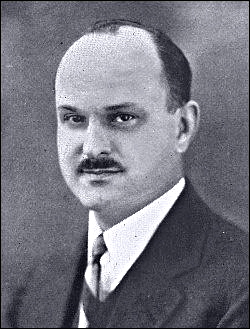
Harold S. Vance - August 22nd, 1889 – August 31st, 1959
An American automobile company executive and government official, notable for being chairman (1935–54) and president (1948-54) of the Studebaker Corporation.
Vance was born in the city of Port Huron. He achieved moderate grades in school and went to work briefly for his father’s law partner whose death terminated that arrangement. In 1910, he obtained a job as a mechanic at the Port Huron branch of the E-M-F Company, which was being acquired by the Studebaker Corporation.
He moved to the Detroit plant and was head of production when he supervised the plant’s closure and move to Studebaker’s primary plant at South Bend, Indiana. Vance was made production vice president at South Bend in 1926, working with Paul Hoffman vice president of sales.
A series of financial mistakes by Studebaker’s president Albert Russel Erskine, led to his suicide and the corporation’s insolvency in 1933. Vance and Hoffman gained control of the company as receivers, along with Ashton G Bean of the White Motor Company and began to reinstate the operation which owed the banks $6 million, but had current assets of $7 million, and a company with a big stock of cars on hand. In 1935, a $6,800,000 new stock and bond issue, took Studebaker out of receivership. At that time, Vance became chairman and Hoffman became president.
A new era of success arrived with the popular 1939 Studebaker Champion. A sales record of over $364 million was set in 1943. Contracts during the Second World War brought in $1.2 billion, and led to the production of 290,000 trucks, 64,000 engines for Flying Fortresses, and 16,000 amphibious vehicles. With Hoffman’s departure, (administrator of the Marshall Plan) in 1948, Vance became both chairman and president of Studebaker until 1954. On February 2, 1953 Vance was featured on the front cover of Time Magazine.
In 1954, Studebaker was merged with Packard Motors Company and Vance left the corporation. A year later, in on October 31, 1955, Vance joined the United States Atomic Energy Commission, and worked there until August 31, 1959.
